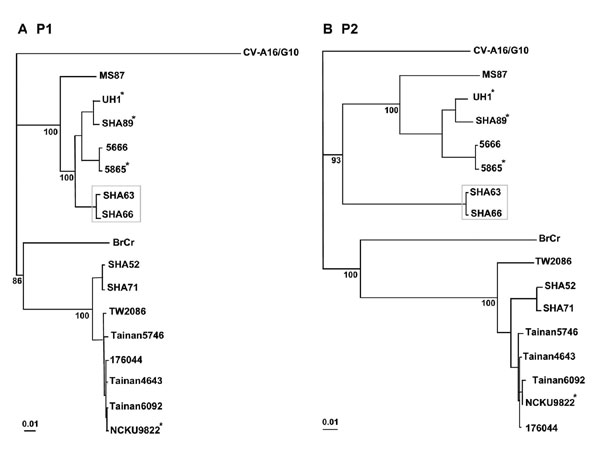Volume 10, Number 8—August 2004
Dispatch
Recombinant Human Enterovirus 71 in Hand, Foot and Mouth Disease Patients
Appendix Figure

Appendix Figure. Phylogenetic trees showing genetic relationships among Human Enterovirus 71 (HEV71) isolates. The neighbor-joining trees were constructed from alignment of nucleotide sequences of P1 (nt 747-3332) (panel A) and P2 (nt 3333-5066) (panel B). Bootstrap values are shown as percentage derived from 1,000 samplings, and the scale reflects the number of nucleotide substitutions per site along the branches. Isolates from fatal cases are denoted with asterisks.
Page created: March 03, 2011
Page updated: March 03, 2011
Page reviewed: March 03, 2011
The conclusions, findings, and opinions expressed by authors contributing to this journal do not necessarily reflect the official position of the U.S. Department of Health and Human Services, the Public Health Service, the Centers for Disease Control and Prevention, or the authors' affiliated institutions. Use of trade names is for identification only and does not imply endorsement by any of the groups named above.